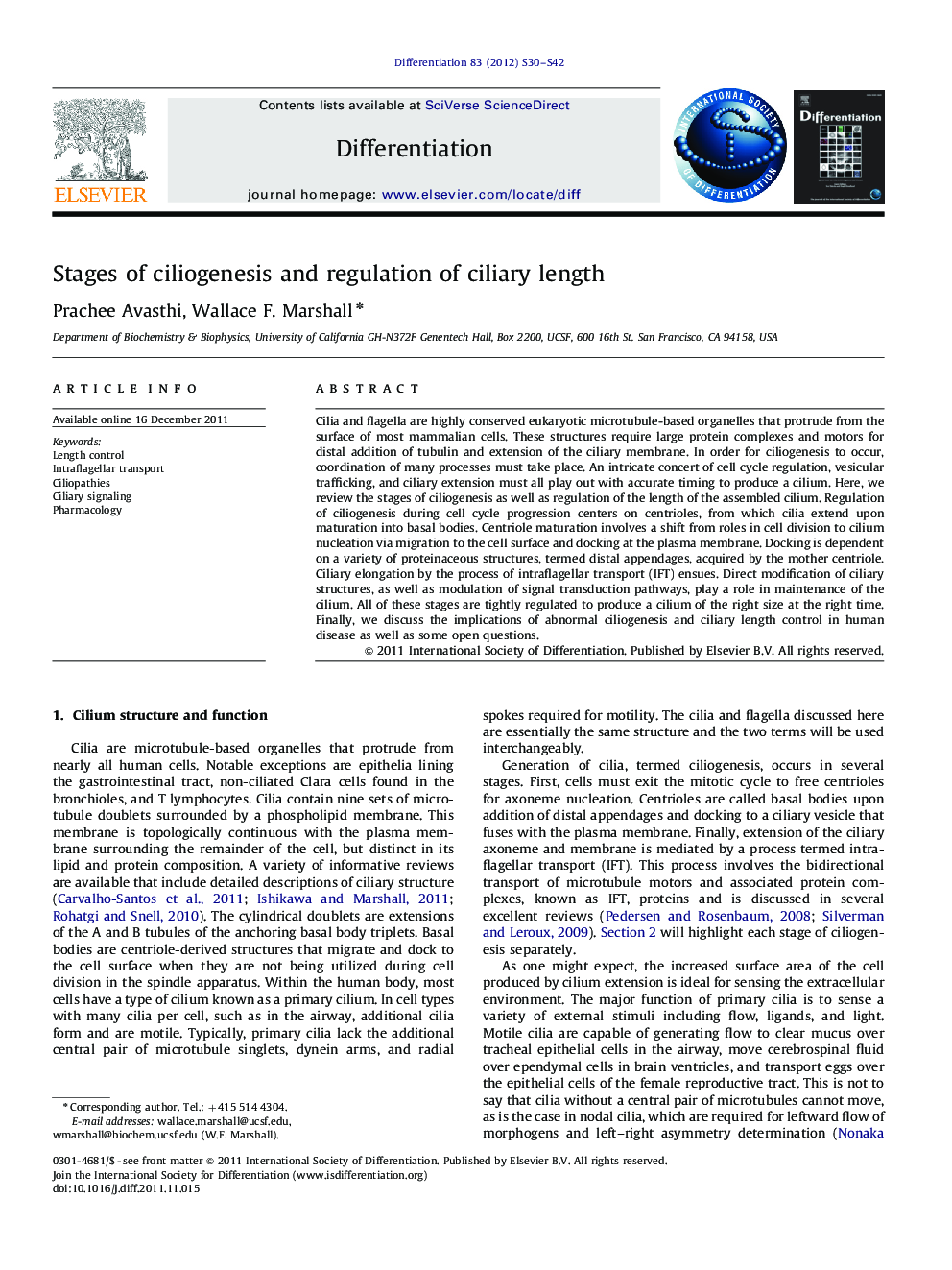| کد مقاله | کد نشریه | سال انتشار | مقاله انگلیسی | نسخه تمام متن |
|---|---|---|---|---|
| 2119381 | 1085385 | 2012 | 13 صفحه PDF | دانلود رایگان |

Cilia and flagella are highly conserved eukaryotic microtubule-based organelles that protrude from the surface of most mammalian cells. These structures require large protein complexes and motors for distal addition of tubulin and extension of the ciliary membrane. In order for ciliogenesis to occur, coordination of many processes must take place. An intricate concert of cell cycle regulation, vesicular trafficking, and ciliary extension must all play out with accurate timing to produce a cilium. Here, we review the stages of ciliogenesis as well as regulation of the length of the assembled cilium. Regulation of ciliogenesis during cell cycle progression centers on centrioles, from which cilia extend upon maturation into basal bodies. Centriole maturation involves a shift from roles in cell division to cilium nucleation via migration to the cell surface and docking at the plasma membrane. Docking is dependent on a variety of proteinaceous structures, termed distal appendages, acquired by the mother centriole. Ciliary elongation by the process of intraflagellar transport (IFT) ensues. Direct modification of ciliary structures, as well as modulation of signal transduction pathways, play a role in maintenance of the cilium. All of these stages are tightly regulated to produce a cilium of the right size at the right time. Finally, we discuss the implications of abnormal ciliogenesis and ciliary length control in human disease as well as some open questions.
Journal: Differentiation - Volume 83, Issue 2, February 2012, Pages S30–S42